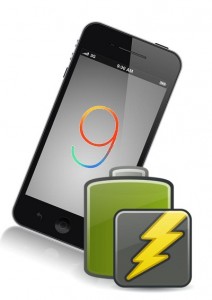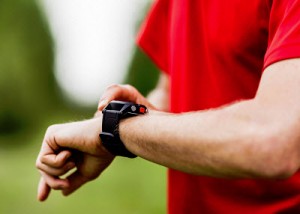The struggles with demands for more time for every charge is forcing owners to have to make a choice.
The latest generations of the iPhone have been including an ever larger number of fancy features and capabilities, beyond the reach of the battery life to keep up in a way that consumers find to be ideal.
Now the iOS 9 could give iPhone users the choice to sacrifice some performance for a longer lasting device.
The idea behind the new Low Power mode in the iOS 9 upgrade is that battery life can be saved while using the features of the device, instead of having to stick to Airplane Mode or scramble to plug the device into a wall outlet. The drawback is that in exchange for the added juice, it compromises some of the device performance. These may not involve hugely important parts of performance, but it means that things will run more slowly and the picture won’t be at its top level.
That said, the changes will allow a user to keep their battery life going for up to 3 more hours.
 This is the first time that Apple has made a move like this. The Low Power mode will shut down the background activity and decrease the performance to help to squeeze up to three more hours out of the smartphone battery.
This is the first time that Apple has made a move like this. The Low Power mode will shut down the background activity and decrease the performance to help to squeeze up to three more hours out of the smartphone battery.
According to a number of leading tech rumor sites, such as Geekbench 3 and MacRumors when running the beta of iOS 9 on the iPhone 6 Plus, the single core processor test score was 1606 and the multicore test received 2897. That said, when running Low Power mode, the figures reduced by about 40 percent, bringing them to 1019 and 1751, respectively. The notes that were taken seemed to imply that it brings the speed of the device back to the days of the iPhone 5S, but that when it is between using your mobile device at a reduced speed or not using it at all, it is an easy choice.
Overall, it is more than likely that the up to three hours will be helpful, but that portable phone chargers will continue to be the key to the kind of battery life that iPhone users want. After all, the reason that many people purchased those devices, in the first place, is for their performance!
While these wearables are highly popular, some evidence is showing that they may not be fully accurate.
In the wearable technology category, no other device is selling as quickly as fitness trackers, which is great news for companies such as Fitbit, which recently took its first steps onto the stock market.
However, experts are saying that people should be careful what information they trust from these wearables.
While experts do agree that wearable technology devices can be extremely helpful in encouraging people to set fitness and health goals, what isn’t yet known is whether or not those gadgets are actually helping users to be able to reach those goals so that they will be able to give themselves an advantage at gaining a healthier body. The advantage to these devices appears to be primarily in encouraging people to create goals and to obtain reminders to stick to those goals. Those features definitely works and a growing number of studies have shown that this is providing people with a measurable advantage.
Evidence that this wearable technology provides reliable feedback in other areas is very limited.
 At the moment, research that has been conducted on the devices to show that they actually work in terms of the feedback that they provide (such as counting steps, calories burned, distance traveled, etc) is very limited. It has been conducted on small numbers or on specific groups of people, so far. There isn’t yet any reliable data with regards to use by the general population.
At the moment, research that has been conducted on the devices to show that they actually work in terms of the feedback that they provide (such as counting steps, calories burned, distance traveled, etc) is very limited. It has been conducted on small numbers or on specific groups of people, so far. There isn’t yet any reliable data with regards to use by the general population.
Fitness trackers are being seen virtually everywhere and come in many forms, such as being attached to clothing, worn on wrists, or fixed to shoes. While they are gathering a large amount of data, what isn’t known is how reliable that data is, or how that data is being used by the wearers.
What isn’t yet known is whether the steps counted, calories burned, heart rate, blood oxygen levels, and sleep quality data are accurate enough to be appropriate to guide the decisions of the wearers. The other factor is that it is not yet known if – regardless of the accuracy of the data – users are actually applying that data to improve their health and performance, particularly over the long term.
 This is the first time that Apple has made a move like this. The Low Power mode will shut down the background activity and decrease the performance to help to squeeze up to three more hours out of the smartphone battery.
This is the first time that Apple has made a move like this. The Low Power mode will shut down the background activity and decrease the performance to help to squeeze up to three more hours out of the smartphone battery.
 At the moment, research that has been conducted on the devices to show that they actually work in terms of the feedback that they provide (such as counting steps, calories burned, distance traveled, etc) is very limited. It has been conducted on small numbers or on specific groups of people, so far. There isn’t yet any reliable data with regards to use by the general population.
At the moment, research that has been conducted on the devices to show that they actually work in terms of the feedback that they provide (such as counting steps, calories burned, distance traveled, etc) is very limited. It has been conducted on small numbers or on specific groups of people, so far. There isn’t yet any reliable data with regards to use by the general population.